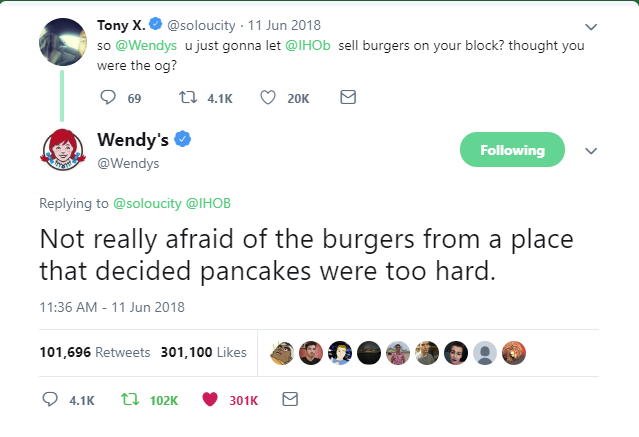Create a good logo…
Find your target audience…
Make your website look professional…
And post on social media as often as possible.
At this point — everybody knows that stuff. Sure, those things are important—
But are they the most effective things you could be doing to build your platform?
Here at Leverage, we’ve tested 100s of tactics over the past 5 years and discovered that only a few of them really move the needle.
We’ve spent years filtering through the fluff. And today, I want to share with you the 6 most effective tactics we’ve found to grow a platform.
If you’re up for that, keep reading.
6 Pieces of Our Best Branding Advice (Based on Experiments Run Over the Last 5+ Years)
1. Don’t settle for anything less than excellence with your content.
According to this study by TechJury—
Over 4.4 million blog posts are published every day.
You’re literally competing with millions of different people to get noticed online.
That might scare some people off, but it’s actually an advantage for people like you and me.
Why?
Most of those 4 million blog posts are garbage. There—I said it.
90% of them are simply copied, rephrased, or summarized versions of stuff we’ve already seen.
And because people are used to seeing mediocre content —
High-quality content stands out.
Which is why creating ONLY exceptional content—whether it’s a blog post, YouTube video, or podcast—is one of the best branding moves you can possibly make.
Resources to Help You Create Incredible Content
- How to Write a Blog Post That Drives Traffic and Generates Leads – Rank Tree
- How to Develop a Digital Content Strategy That Fuels Your Business in 2020 (And Beyond) – Rank Tree
- The YouTube Marketing Hub – Backlinko
- How to Start a Podcast in 2020 – Smart Passive Income
- 13+ Best Podcast Hosting Sites and Platforms for 2020 (Free & Paid) – FounderJar
2. Make bold promises (and keep them).
Ever wonder why Amazon Prime promises 2-day delivery? What about why the Big Green Egg offers a lifetime warranty?
Each of those promises is risky and could’ve easily been left off their marketing campaigns.
But they chose to prominently display them.
Why?
These companies understand that bold promises make a similarly bold statement to their customers:
“We believe in our product/service so much that we’ll take all the risk of you trying it out.”
And by putting skin in the game, they develop trust with their customers.
This is HUGE. No brand can last without keeping their audience’s trust.
And one of the easiest ways to do this is by making (and keeping) bold promises about the quality of your product or service.
3. Interact with your audience regularly.
Everyone knows you should post regularly on social media.
DUH.
But few people seem to realize this:
Posting random stuff doesn’t really do anything.
Most brands simply put their blog posts into an auto scheduler and call it a day.
That’s definitely part of what you should be doing, but you’re sabotaging yourself if that’s all you do.
Social media is the perfect place to interact with your customers on a daily basis.
And the easiest way to do that is by joining conversations your customers are having.
In my opinion, Wendy’s Twitter account—yes, the fast food place—is the best example of this.
I’m indifferent when it comes to their food, but I follow their Twitter account simply because it’s amazing.
If you scroll through their Tweets, you’ll see that they:
- Do talk about their food…
- Do have promotional tweets…
- And do sometimes try to get you to come to their restaurant…
But they mostly join trending conversations their customers are having.
Some examples:
- They tweeted this shortly after McDonald’s announced their new bacon cheese fries:

- They tweeted this after Super Bowl 53:

- They replied to a tweet from the official Game of Thrones account with this:

Hilarious way to diss Burger King, right?
- (My favorite) They tweeted this at someone who asked them what they thought about iHop rebranding to iHob and selling burgers:

I literally laughed for 20 minutes when I saw this the first time. The person running their Twitter account deserves a raise.
Because they join these conversations, and always manage to be hilarious, I — along with over 3 million other people — follow them on Twitter.
Interacting with your customers like this on a regular basis—be it on social media or in forums—will:
- Help you turn customers into superfans
- Expand your reach
- Further solidify your brand values
4. Give away some of your best content for free.
I’m not telling you to give away your trade secrets—I’m telling you to give away everything else.
Keep reading…I have proof that this can actually make you money.
21-time New York Times bestselling author, Jerry Jenkins, shares content on all things writing at his blog.
He has mega-guides on everything from writing a book to getting published that are thousands of words long.
In them, he reveals his advice and the step-by-step processes he’s used to write bestselling novels.
He also has several writing courses on those exact topics.
Is he sabotaging himself by giving away too much?
Let’s see…
Within 18 months of giving away some of his best content, his traffic shot from 20k to 165k monthly visitors.

That traffic helped him enjoy multiple 6-figure course launches.
How did he keep selling his courses at all-time-highs when he was giving so much information away for free?
He gave everything away but his trade secrets.
His blog content and YouTube videos have fantastic content, but they don’t include his most valuable pieces of information.
Those are left for his courses.
Doing this helps you:
- Wow your audience with your knowledge—showing them you really do know your stuff
- Generate passive, consistent traffic from search engines like Google and YouTube
- Leave readers wanting more—increasing the chances they become customers
- Creates goodwill among your audience for giving them so much value for free
5. Build your authority.
A huge part of gaining trust with your audience is establishing yourself as an authority in your niche.
When people hear your name, you want them to think of you as “the go-to person/company for [BLANK]”.
But how do you do that?
One of the easiest ways is by guest posting and interviewing on blogs and podcasts with big audiences similar to the one you want to attract.
This helps you:
- Establish yourself as an industry leader
- Expand your reach to new audiences
- Build backlinks to your site, so you can rank higher in Google
Resources for Getting Interviews and Guest Posts
- Guest Blogging: The Definitive Guide (2020) – Backlinko
- The Ultimate Guide to Getting on Podcasts as a Guest – Podcast Motor
- How to Write a Guest Post Pitch That Converts – Hunter.io
6. Be consistent (no matter what).
You have a website. You have social media accounts. You have a YouTube channel. You have a podcast.
All of these are extensions of your brand where you interact with your audience.
But I have to ask:
Are you consistent with your voice, message, design, and brand values across each of them?
It’s worthwhile to do an in-depth “consistency audit” once or twice per year to make sure the answer is an emphatic yes.
Why?
If you aren’t consistent across all channels, you’ll dilute your brand.
Your email subscribers will view you one way, your YouTube subscribers another, and your Twitter followers another.
And when it comes time to try to sell to them, they won’t be ready because something will confuse them.
They:
- Won’t understand why you made that product or offer that service
- Will read your sales copy and feel like your offering wasn’t made specifically for them (when it definitely was)
- Or they’ll realize you aren’t who they thought you were and will leave your audience
Thankfully, the fix here is simple:
Create an in-depth brand document outlining your values, positioning statement, value proposition, and more, so you can always refer to it when deciding whether something is “on-brand” or not.
We’ve even published our Brand Development Process to help you do that. It’s free. 😉
Your Brand Won’t Grow By Itself
These 6 branding tips have been proven to help grow platforms.
…But that doesn’t mean it’s going to be a cakewalk.
Building a strong brand takes time and perseverance. You’ll have to get used to putting yourself out there and doing things outside your comfort zone.
But it can be done, and you have everything it takes to make it happen.

